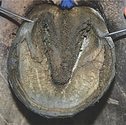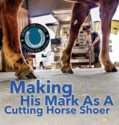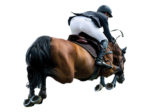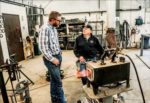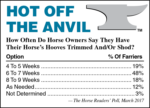Advertise Follow Us
American Farriers Journal
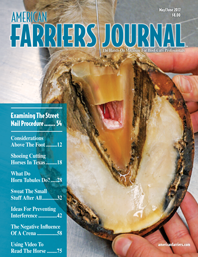
View Archived Issues
May/June 2017
Volume: 43
Edition: 4
American Farriers Journal is the “hands-on” magazine for professional farriers, equine veterinarians and horse care product and service buyers.
-
Table Of Contents
Table Of Contents
Are You Considering More Than Feet When You Trim and Shoe?
Understanding deviations will guide you in helping the horse, Hall Of Fame farrier tells Summit attendeesRead MoreMaking His Mark as a Cutting Horse Shoer
Texas farrier Jake Whitman draws from his time as a trainer to keep these athletes goingRead MoreWhat Do Horn Tubules Do?
Although farriers know that horn tubules play an important role in hoof wall structure, this article provides a deeper understanding of itRead MoreFarriers Sweat the Small Stuff to Keep Performance Horses Competing
Sore feet, abscesses occur regardless of discipline and require quick and effective hoof careRead MoreReach Your Full Potential Through Continuing Education
Commitment, consistency and accountability will help you achieve your goals in improving your skill and knowledge as a farrierRead MoreQ&A: May/June 2017
What discipline do you find challenges you the most when the horse interferes and why?Read MoreMatching the Shoe to the Job
Experienced farriers say the choice should be based on a number of factors, many of which have nothing to do with the shoe itselfRead MoreTreatment For Dealing With Penetrating Injuries
Iowa State University veterinarian and farrier discuss the street nail procedure as treatment and their roles in helping horses recover from this traumaRead MoreHistologic Characterization of the Laminar Interface at the Crena Marginis Solearis in Horses
Farrier’s research examines the microscopic anatomy of the laminar interface at the distal margin of the distal phalanx of equine forefeet with the presence of a crena marginis solearisRead MoreAttention to Details Are Key When Gluing Polyurethane Shoes
Massachusetts farrier shares strategies for applying these solutionsRead MoreBe Part Of The Farriers Spotlight
We’re looking for more pictures and stories of our favorite hard workers for the 19th annual National Farriers WeekRead MoreUse Your Rig To Boost Your Bottom Line
Farriers share ideas for cutting costs and generating revenueRead MoreA Different Point Of View
Wisconsin farrier experiments with video to learn more about equine gaitsRead MoreResearch Journal: May/June 2017
The information, ideas and opinions expressed are those of the author and do not necessarily represent those of the United States Department of Agriculture.Read More -
Featured Articles
Featured Articles
Are You Considering More Than Feet When You Trim and Shoe?
Understanding deviations will guide you in helping the horse, Hall Of Fame farrier tells Summit attendeesRead MoreMaking His Mark as a Cutting Horse Shoer
Texas farrier Jake Whitman draws from his time as a trainer to keep these athletes goingRead MoreHistologic Characterization of the Laminar Interface at the Crena Marginis Solearis in Horses
Farrier’s research examines the microscopic anatomy of the laminar interface at the distal margin of the distal phalanx of equine forefeet with the presence of a crena marginis solearisRead More - Digital Edition
-
Online Extras
Online Extras
Digital Options To Improve Your Practice
Farriers offer advice on using technology to expand knowledge for both you and your clientsRead MoreFlip-Flops Gaining Foothold In Show World
New York farrier shares some advantages and disadvantages of the padRead More

